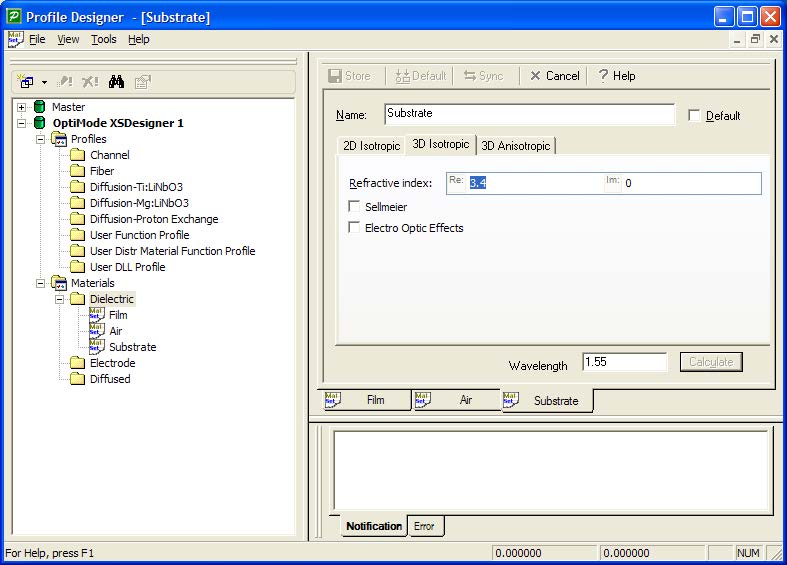To define the materials for the OptiMode 3D Mode Solver, perform the following procedure. Note the Profile Designer has two directories, Master and the default name for the new project. The Master is a storage place only, and does not participate in the project. The materials for this project should be defined under the directory for this project, so minimize the Master for now.
| Step | Action |
| 1 | Create the following dielectric materials (see Figure 2):
a. Name: Film 3D Isotropic Refractive index (Re:): 3.44 |
Figure 2: Film Material
| b. Name: Air
3D Isotropic Refractive index (Re:): 1 c. Name: Substrate 3D Isotropic Refractive index (Re:): 3.40 Remember to click Store on each item when you’re done. |
|
| 2 | Create the following channel (see Figure 3):
Name: RidgeWG 2D Profile definition material: Film 3D Profile definition material: Name: Layer, Width = 3, Thickness = 1.0 Offset = 0.0 Material = Film |
Figure 3: Channel Profile Definition
After this step, minimize the Profile Designer and return to the OptiMode XS Designer.



